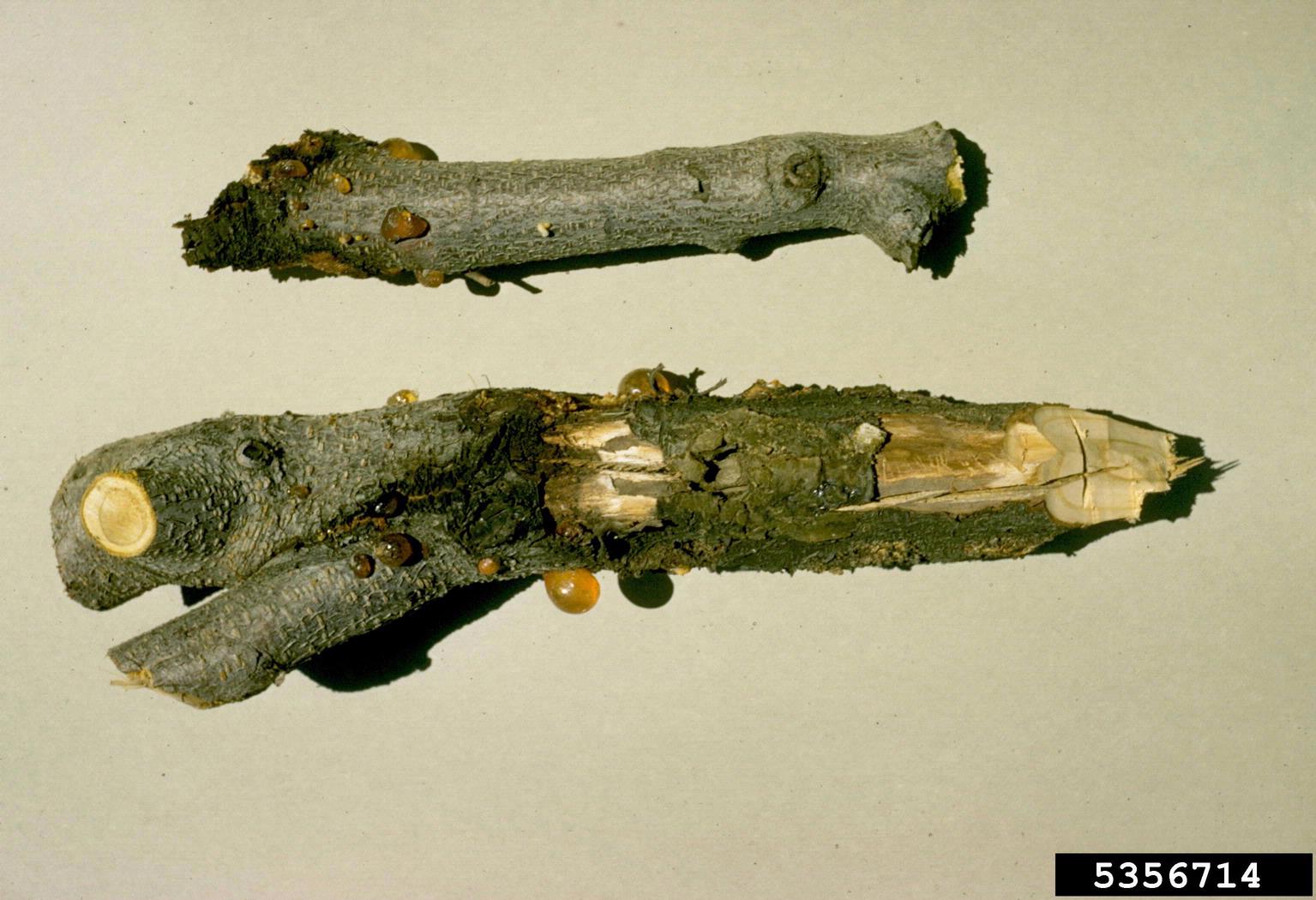Peach Leucostoma Canker: Information About Cytospora Peach Canker


Peach leucostoma canker is a common source of frustration among home orchardists, as well as commercial fruit growers. Infected trees not only result in lowered fruit yields, but often lead to complete loss of the plants. Prevention and management of this fungal disease is of the utmost importance, as preventing spread throughout the orchard is a high priority.
Symptoms of Leucostoma Canker of Peach Trees
Also known as cytospora peach canker, this tree disease may affect many other stone-type fruits. In addition to peaches, trees that may all develop signs of this fungal disease include:
Like many fungal diseases, peach canker is often the result of damage or injury to the tree. Damage caused by routine pruning, inclement weather, or other orchard maintenance may cause stressed fruit trees to become more susceptible to canker. This damage allows spores to begin to colonize. In the spring, growers will notice a gum-like sap secreted from the trees near a previous injury. Though healthy growth resumes during the summer, spores will once again spread and attack tree tissue over winter. Eventually, canker may spread throughout the entire branch and cause it to die.
Peach Canker Treatment
Treating already established peach canker infection is difficult, as fungicides are not effective. Removal of cankers from branches and limbs is possible, but not a cure for the disease, as spores will still be present. Infected wood should be immediately removed from the property, as spores are still able to spread after removed from the tree. Since little can be done for already established infections, the best treatment of cytospora peach canker is prevention. Cytospora canker can be easily avoided, as it seldom able to become established in healthy fruit trees. By practicing good orchard sanitation, proper pruning techniques, and adequate fertilization routines, growers are able to prevent premature fruit tree decline. In most cases, it becomes necessary to plant new fruit trees, as a means to begin establishing a new disease-free orchard. When doing so, choose a well-draining location that receives ample sunlight. Make certain that the new plants are situated far from infected trees, and purchase only from a reputable source. This will ensure purchased plants do not introduce disease into newly established orchards.
Sign up for the Gardening Know How newsletter today and receive a free copy of our e-book "How to Grow Delicious Tomatoes".

Tonya Barnett has been gardening for 13 years. Flowers are her passion. She has transformed her backyard into a cut flower garden, which she regularly chronicles on her YouTube channel http://www.youtube.com/@tonyawiththeflowers.